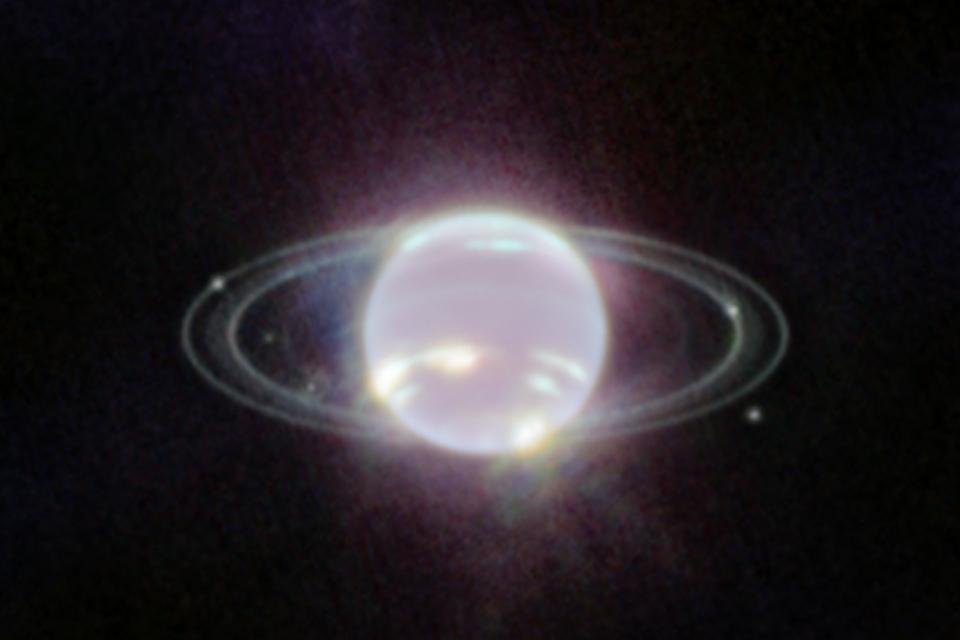NASA has revealed stunning new images of Neptune captured by the James Webb Space Telescope. The record clearly shows the rings and atmospheres of the farthest planet in the Solar System, as well as 7 of the Ice Giant’s 14 known moons: Triton, Galatea, Naiad, Thalassa, Despina, Proteus, and Larissa.
Because Webb’s cameras operate at infrared wavelengths, Neptune does not appear in the composite with its characteristic blue color. A greater luminosity can be observed in the polar regions as a result of the belt of high-latitude clouds formed by cold gases, mostly methane, that reflect sunlight.
In addition to these extremes on the planet, a fainter glow along the equatorial line reinforces the visual signature of Neptune’s atmospheric dynamics. The region is dominated by winds and storms that give rise to the circulation belts, most famously the Great Dark Spot, first described by the Voyager 2 spacecraft more than 30 years ago.
It’s worth noting that NASA has already set plans to conduct additional studies of Neptune’s atmosphere starting next year. In addition, the Trident mission will aim to explore the mysteries of the icy worlds by focusing on Triton, the planet’s largest moon, which scientists believe has an ocean beneath its icy crust.
Source: Tec Mundo
I am Bret Jackson, a professional journalist and author for Gadget Onus, where I specialize in writing about the gaming industry. With over 6 years of experience in my field, I have built up an extensive portfolio that ranges from reviews to interviews with top figures within the industry. My work has been featured on various news sites, providing readers with insightful analysis regarding the current state of gaming culture.













